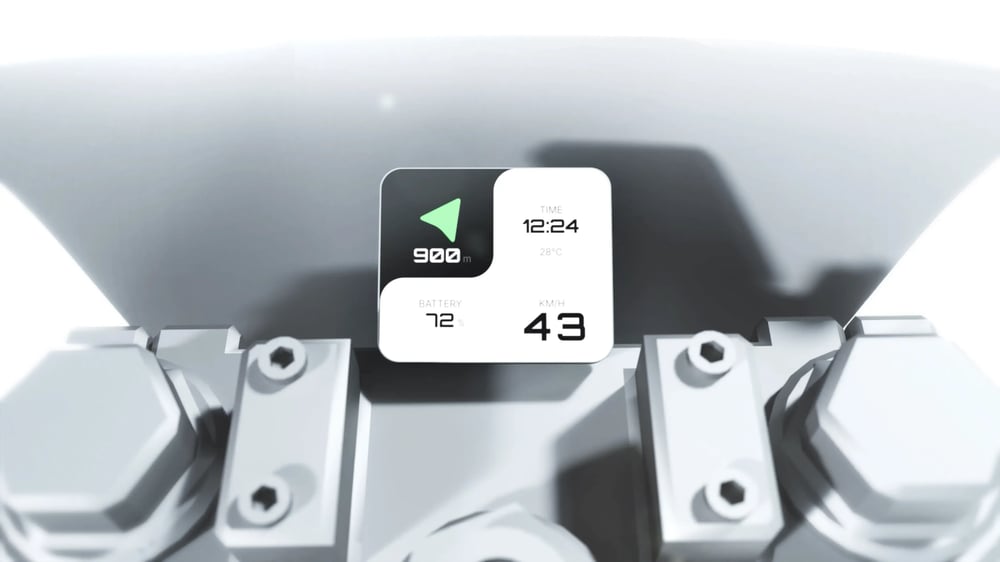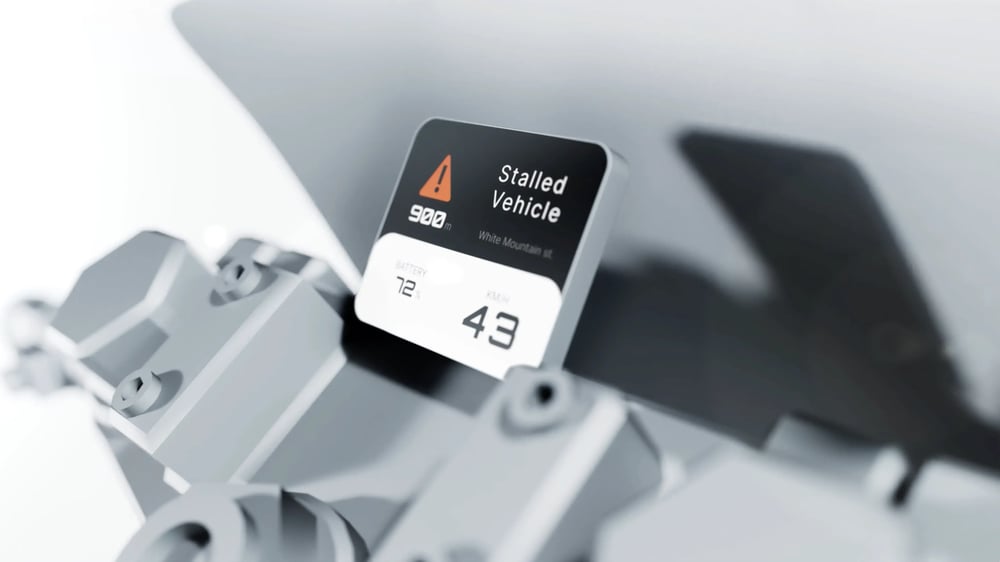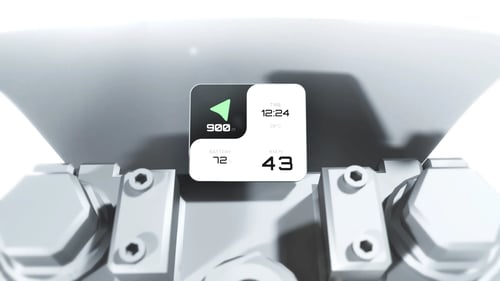Ensuring Safety in Embedded Systems for Micro-Mobility
June 11, 2025 by Qt Group | Comments
Industry Insights Blog Series


Director, Qt for Microcontrollers

Senior Product Lead, MCU
Safety is paramount in embedded systems, particularly in the micro-mobility sector, where there is little room for error. Embedded systems control critical functions in vehicles, ensuring everything from speed control to braking systems operates smoothly. In micro-mobility vehicles such as e-scooters and e-bikes, these systems often operate under real-time constraints and are built using hardware with limited resources. A failure in these systems can result in severe consequences, including accidents and fatalities.
High-end electric bikes and motorcycles typically use microprocessors (MPUs) to power digital dashboards that provide riders with real-time data, navigation, and connectivity options. MPUs offer high processing power and are used in systems where running multiple applications or handling complex computing tasks is necessary. MPUs are integral in modern computing devices where the demand for processing capabilities is high, while microcontrollers (MCUs) are designed for specific tasks with integrated memory and peripherals. They are ideal for applications where simplicity, efficiency, and low power consumption are priorities. MCUs are commonly used in embedded systems for real-time control tasks. Both MCUs and MPUs can work together to enable innovative features like GPS tracking, mobile app connectivity, and over-the-air updates. As the micro-mobility vehicles increasingly rely on software-defined architectures, the complexity and associated risks grow significantly.
The intricacy of modern embedded systems additionally adds another layer to the safety challenge. These systems typically involve a combination of hardware and software components that must work in perfect harmony. Any malfunction or miscommunication between these components can compromise the safety of the entire system.
Global Landscape of Safety Regulations for Micro-Mobility
The regulatory landscape for safety in embedded systems varies broadly across the globe. While automotive regulations are relatively well-defined, the micro-mobility sector is still catching up. In many countries, regulations for two-wheelers and other micro-mobility solutions are either non-existent or in the early stages. This lack of regulation creates a fragmented market where safety standards can vary from one region to another.
In Europe, for example, there are stringent safety regulations that manufacturers must adhere to. Yet, there is no de facto certification explicitly written into law for many micro-mobility solutions. Companies often anticipate future regulations and self-imposed safety standards to stay ahead of the curve. On the other hand, countries like India have less strict regulations, allowing for more flexibility but may also pose higher risks.
Understanding Functional Safety Standards: ISO 26262
Functional safety is a critical aspect of embedded systems, and ISO 26262 is the functional safety standard for the automotive industry. The goal of functional safety is to identify potential hazards and implement measures to mitigate risks. This involves assessing the probability and severity of possible harms and ensuring that systems are designed to minimize these risks to an acceptable level.
The ISO 26262 standard encompasses a comprehensive range of areas, including hazard analysis, risk assessment, and safety management, covering the entire development process—from initial concept to decommissioning. Importantly, the standard is not restricted to automobiles; it also includes provisions for motorcycles and smaller vehicles, making it relevant for the growing micro-mobility sector.
ISO 26262 categorizes safety requirements into different levels, known as Automotive Safety Integrity Levels (ASILs). These levels are determined based on three key factors: severity, exposure, and controllability. They range from ASIL A (the lowest) to ASIL D (the highest integrity requirements on the product).

How Qt Group Solutions Ensures Compliance in Micro-Mobility Solutions
Qt Group provides a variety of solutions aimed at helping companies comply with safety and regulatory requirements for embedded systems in the micro-mobility sector. One such solution is the Qt Safe Renderer.
Qt Safe Renderer (QSR)
QSR provides a UI rendering component that can be used to render safety-critical information to end-users, such as telltales in vehicles or takeover notifications in driving systems. QSR ensures that the information is clearly and accurately presented on vehicle dashboards. It is also certified to the highest level of functional safety (ASIL D), guaranteeing its reliability and adherence to the ISO 26262 standard, as well as IEC standards for general and medical applications, among others. Furthermore, the recent release, Qt Safe Renderer 2.2.0 Beta 2, introduces support for using safety-critical items on Qt Quick Ultralite applications. Qt Quick Ultralite brings Qt's key graphical user interface features to resource-constrained embedded systems powered by microcontrollers (MCUs). It allows developers to create sophisticated user interfaces with a small footprint and is ideal for devices with limited processing power and memory.
Qt for MCUs
Another of our essential solutions is Qt for MCUs, a complete graphics framework and toolkit for creating and delivering smartphone-like user experiences on resource-constrained devices. Qt for MCUs enables UI reuse across MPUs and MCUs and rapid development with ready-made components. Qt Framework’s cross-platform capabilities further allow for consistent user experiences across different hardware platforms.
The combination of QSR and Qt for MCUs provides developers with a comprehensive strategy for creating both visually appealing and functionally safe applications. Utilizing both solutions streamlines the development process by offering pre-certified components, significantly reducing the time and cost of obtaining safety certifications. Additionally, this combination enhances the overall quality and reliability of the final product, making it an invaluable asset for companies in the current market.
Watch On-Demand Webinar: Next-Gen Two-Wheelers: Premium UX on Practical Hardware
Functional safety is the backbone of reliable micro-mobility systems. With Qt Group pre-certified solutions, manufacturers can navigate the complex world of safety certification with ease, ensuring their products are both safe and market-ready.
-
Manufacturers don't have to spend time going through the lengthy and costly process of certification themselves for the features or components they integrate into their products.
-
Manufacturers can be confident that they are meeting the safety standards required by regulators, reducing the risk of non-compliance.
-
The pre-certification process has already tested the software and its components for reliability and safety, so the chances of failure in the final product are significantly reduced.
The Role of AUTOSAR Architecture in Embedded Systems
AUTOSAR (AUTomotive Open System ARchitecture) is a standardized architecture that aims to improve the safety and reliability of automotive software. While initially designed for traditional automotive systems, AUTOSAR is also increasingly being adopted in the micro-mobility sector. One of the key values is its emphasis on process isolation and memory protection. This ensures that a malfunction in one part of the system does not affect the rest, enhancing overall safety.
Qt Group has a broad portfolio of solutions that are specifically aimed at improving the efficiency of various parts of the AUTOSAR use cases, including a robust reference integration of the Qt for MCUs graphics toolkit in AUTOSAR Classic applications, which provides a significant reduction in the software integration effort.
AUTOSAR was originally designed for non-graphical systems, like controlling vehicle functions through electronic control units. However, as microcontrollers started supporting advanced graphics, the need arose to integrate AUTOSAR with graphical user interfaces. Qt Group has pre-integrated AUTOSAR with its graphical solutions, allowing manufacturers to quickly bring products to market with both AUTOSAR architecture and graphical features.
Enhancing Safety with Quality Assurance Tools
Quality assurance is critical to developing safe and reliable embedded systems. Qt Group also offers various quality assurance tools including Axivion Suite for static code analysis and architecture verification, Coco for code coverage, and Squish for test automation.
Axivion ensures compliance with safety and security guidelines, such as MISRA C/C++:2023, AUTOSAR C++14, and CERT. While Axivion Static Code Analysis focuses on maintaining high code quality, Axivion Architecture Verification ensures software implementation aligns with its architectural design. It flags deviations between the planned and implemented architecture, allowing quick corrective actions. This process is crucial for maintaining the integrity of the system's design, which impacts its safety and reliability. By reducing technical debt and maintenance costs, Axivion facilitates a faster time-to-market for new developments.
Code coverage reports are essential for assessing how much source code is executed during testing. Achieving high code coverage is particularly important in safety-critical systems, as it minimizes the risk of undetected issues by ensuring most code paths are tested.
Squish is a GUI test automation tool that validates that every interaction performs as designed and renders accurately on the actual target displays. Squish offers comprehensive solutions for MPU-based systems (often using Qt 6) and Squish for MCUs for resource-constrained microcontrollers.
Learn more: Two-Wheeler Embedded UIs: Test Right or Risk Product Recalls
The Way Forward
The micro-mobility sector is evolving rapidly, and so too are safety regulations. Manufacturers must not only focus on meeting current safety standards but also anticipate future regulatory changes to stay ahead of the competition.
By integrating Qt Group's quality assurance tools, QSR, Qt for MCUs, and other graphical user interface solutions, you will get a holistic approach to developing micro-mobility solutions that not only deliver excellent user experiences but also achieve the rigorous safety standards required in today's market.
Explore our products today, try Qt online, or reach out to us to see how we can speed up prototyping in the micro-mobility business.
Learn more about Qt in Micro-Mobility.
Blog Topics:
Comments
Subscribe to our newsletter
Subscribe Newsletter
Try Qt 6.9 Now!
Download the latest release here: www.qt.io/download.
Qt 6.9 is now available, with new features and improvements for application developers and device creators.
We're Hiring
Check out all our open positions here and follow us on Instagram to see what it's like to be #QtPeople.



As the micro-mobility sector matures, anticipating safety regulations before they become mandatory will give companies a competitive edge, ensuring they're not just compliant, but also trusted by consumers.